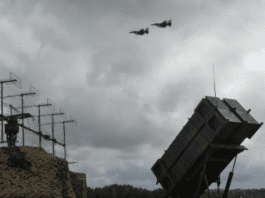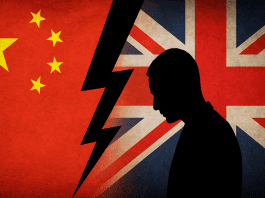On the front lines of eastern Ukraine, the Ukraine Russia conflict has evolved into a battle of precision, technology, and strategy. Recently, Ukrainian commanders have increasingly relied on drones, artillery, and careful troop movements to counter Russia’s numerical advantage.
Precision and Technology Redefine the Ukraine Russia Conflict
One striking example comes from a Ukrainian command post about 10 miles from the front line. Observers watched two Russian soldiers walking along a dirt road. When they raised their rifles to target a Ukrainian drone, the drone had already dropped a bomb, exploding in the space between them. Despite the strike, the soldiers survived and retreated into nearby trees. This event highlighted both the risks and sophistication of drone warfare in the ongoing Ukraine Russia conflict.
Ukrainian commanders, like the call sign YG of the 66th Mechanized Brigade, have stressed that drones are only part of the answer. Careful planning, limited direct contact, and precise troop movements are critical in compensating for Ukraine’s shortage of soldiers. YG explained that Ukrainian troops aim to avoid unnecessary engagement while still keeping Russian forces in check.
Ukraine’s air shield falters — Russia shifts missile tactics to confuse U.S.-made Patriot defenses
Artillery plays a key role as well. After monitoring Russian positions through drones, Ukrainian forces often fire precision strikes to disrupt enemy positions. The first strikes may not always hit directly, but they create opportunities for infantry teams to approach and neutralize targets. Every move is meticulously coordinated, from the time it takes to reach designated positions to the routes chosen to avoid exposure.
Innovative Strategies to Protect Soldiers in the Ukraine Russia Conflict
Ukraine faces a serious shortage of manpower, making soldier preservation a top priority. Commanders are using rotation plans to give troops breaks, reducing physical and mental strain during prolonged deployments. The command posts themselves are often set up in private homes or inconspicuous locations to avoid detection by enemy drones and artillery.
Ground drones, remotely controlled robots, have also become essential. These machines can transport supplies or evacuate injured soldiers from dangerous zones. One reported incident involved a soldier with arm and head injuries who was evacuated using a ground drone. When the drone stopped due to terrain difficulties, the soldier managed to push it forward and continue his evacuation, demonstrating both resilience and the effectiveness of technology-assisted operations in the Ukraine Russia conflict.
Russia moves to seize €5.1 billion snack empire KDV after founder accused of backing Ukraine
Surveillance drones are equally important. Pilots use advanced cameras to monitor enemy movements, sometimes seeing soldiers through trees with incredible detail. The ability to track and attack targets from a distance allows Ukraine to inflict losses while minimizing its own casualties. A drone pilot in Kharkiv had reportedly neutralized around 200 Russian soldiers in a year, a testament to the precision and lethality of modern drone warfare in the Ukraine Russia conflict.
The Human Dimension of War
Even with high-tech equipment, the war has a deeply human element. Ukrainian soldiers experience stress, exhaustion, and loss, but their training emphasizes survival and careful coordination. The front line has become a complex network where human decisions work alongside technology to hold territory in the Ukraine Russia conflict.
There is also a psychological aspect. Russian troops have been described as operating in a “disposable” caste system, with some soldiers knowingly sent to dangerous situations as decoys. Ukrainian troops observe these tactics and adjust their strategy accordingly, avoiding unnecessary confrontations and focusing on well-prepared targets.
The civilian environment also influences military operations. Command posts often resemble ordinary homes or offices, and soldiers wear casual clothing to avoid drawing attention from drones or spies. This blending of civilian and military tactics highlights Ukraine’s adaptive approach to modern warfare.
Ukraine warns of Russia-linked shadow tankers launching drones against European countries
Hatred and anger toward Russian forces are widespread among Ukrainians, fueled by years of conflict and propaganda. Yet, Ukrainian commanders remain focused on limiting casualties and using every available tool, from drones to artillery, to defend their positions effectively in the Ukraine Russia conflict.
Even with challenges such as recruiting new soldiers and managing limited resources, Ukrainian forces have demonstrated adaptability and ingenuity. From drone operations to careful infantry maneuvers, the country has turned technology and strategy into a powerful counter to Russia’s numerical advantage in the Ukraine Russia conflict.







